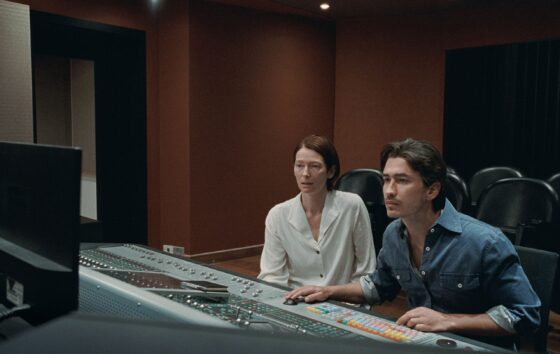CS90 Editor’s Note: Top Ten of ’21

By Mark Peranson
The Cinema Scope Top Ten of 2021
1. What Do We See When We Look at the Sky? (Alexandre Koberidze)
2. Memoria (Apichatpong Weerasethakul)
3. Drive My Car (Hamaguchi Ryusuke)
4. France (Bruno Dumont)
5. In Front of Your Face (Hong Sangsoo)
6. Wheel of Fortune and Fantasy (Hamaguchi Ryusuke)
7. Annette (Leos Carax)
8. Benedetta (Paul Verhoeven)
9. The Tsugua Diaries (Maureen Fazandeiro, Miguel Gomes)
10. The Souvenir Part II (Joanna Hogg)
Special mentions: The Card Counter (Paul Schrader); The Girl and the Spider (Ramon Zürcher, Silvan Zürcher); A Night of Knowing Nothing (Payal Kapadia); Petite maman (Céline Sciamma); The Power of the Dog (Jane Campion)
For what it’s worth, I’ll begin with a few observations on the above which, to remind you once again, represents a collective expression of the regular contributors and the editors of this magazine, who passed lists along to me in a simple ranked listing of preference. Every single one of the films listed in this year’s top ten premiered at a film festival in 2021, in particular, either Berlin (four), Cannes (both six in Official Selection and two in Quinzaine), or Venice (two). And not only did all the films premiere at festivals, but every single one of them also had a theatrical release in North America (or, in the case of Hong Sangsoo and a few others, will have one in 2022; as typical of recent years, 12 months cannot conceivably contain the Hong output for said year).
I’m not sure if this is unprecedented—I’ll leave that to the film-studies historians—if it is merely a coincidence, or if it has something to do with the year that we all managed to live through wherein some major film releases were curtailed due to COVID. But unlike in 2020, in various forms (live, online, a combination of the two), film festivals managed to keep going and proved their relevance. As one of these frontline culture warriors myself, and having just survived an in-person Berlinale—many of whose films are covered in these pages—I take this fact as solace that film festivals will continue to have a crucial place in this systemic constellation, despite the growing predominance of streaming platforms (one film above comes from Netflix, and one was produced by Amazon) to the increasing Marvelization of the studios. I agree that one can point to a COVID backlog as one reason for the strength of last year’s output, but I should also note that, by my count, six of these films were shot during the pandemic.
But, of course, being a culture warrior has very recently taken on another connotation, as just as we were putting this one to bed current events in Europe have demanded responses from international, national, and individual levels, both business and personal. Though it was too late to include any film-world response to the illegal invasion of Ukraine in these pages—and hopefully, by the time the next issue rolls around, this useless war will be in the past—the questions of cultural boycott have to be considered, even in the case of a film magazine, be it entirely symbolic. Whether or not to include Russian films at a festival is a slightly more impactful decision (more so than what categories to present live at the Oscars), and that this question is being posed points to the inseparability of what pundits consider to be an insular field—namely, cinema—from the general sphere in which it is consumed. Again, for what it’s worth, I believe that film critics and filmmakers have a duty to respond to current events, and I regret being unable to include some of these voices in these pages. All I can hope is that the newfound climate of responsibility extends beyond this one event, however significant it may turn out to be, because to work in the arts in the 21st century is to work in politics.
Mark Peranson- « Previous
- 1
- 2


